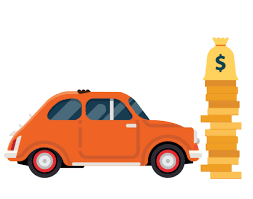Liability coverage is a fundamental type of car insurance coverage that is required in most jurisdictions. It provides protection for the costs associated with injuries or property damage you cause to others in an accident where you are at fault. Here’s a closer look at liability coverage and other common types of car insurance coverage:
- Liability Coverage:
Liability coverage is divided into two main categories:a. Bodily Injury Liability: This coverage pays for medical expenses, lost wages, pain and suffering, and legal fees incurred by others involved in an accident where you are at fault. It helps cover the costs of injuries and can provide financial protection if you are sued for damages.b. Property Damage Liability: Property damage liability coverage pays for repairs or replacement of other people’s property, such as vehicles, buildings, or other structures, that are damaged in an accident where you are at fault.
Liability coverage limits are usually expressed as three separate numbers, such as 25/50/25, which represent the maximum amount the insurance company will pay for bodily injury per person, bodily injury per accident, and property damage per accident, respectively.
- Collision Coverage:
Collision coverage helps pay for the repair or replacement costs of your vehicle if it is damaged in a collision with another vehicle or object, regardless of who is at fault. Collision coverage is typically subject to a deductible, which is the amount you must pay out of pocket before the insurance coverage applies. Collision coverage is often required if you have a car loan or lease, but it is optional in other cases. - Comprehensive Coverage:
Comprehensive coverage, also known as “comp,” provides protection for damage or loss to your vehicle that occurs due to non-collision events. This can include theft, vandalism, fire, natural disasters, falling objects, and damage caused by animals. Comprehensive coverage is optional in most jurisdictions but is commonly purchased alongside collision coverage. - Personal Injury Protection (PIP) or Medical Payments Coverage:
Personal Injury Protection (PIP) or Medical Payments Coverage provides coverage for medical expenses resulting from injuries sustained in an accident, regardless of fault. It may also cover other costs such as rehabilitation, lost wages, and funeral expenses. PIP is required in some jurisdictions, while in others, it is optional. - Uninsured/Underinsured Motorist Coverage:
Uninsured/underinsured motorist coverage protects you if you are involved in an accident with a driver who has no insurance or insufficient insurance coverage to fully compensate for your injuries or damages. This coverage helps fill the gap and may also provide coverage in hit-and-run incidents. - Gap Insurance:
Gap insurance covers the “gap” between the actual cash value of your vehicle and the amount you owe on a car loan or lease. In the event of a total loss, where the insurance payout is insufficient to cover your outstanding loan or lease balance, gap insurance helps pay off the remaining amount. - Rental Car Coverage:
Rental car coverage, also known as “loss of use” coverage, reimburses you for the cost of a rental vehicle while your car is being repaired due to a covered claim. This coverage is usually optional.
It’s important to note that the availability and specifics of these types of coverage can vary depending on the insurance company and the jurisdiction in which you reside. When purchasing car insurance, carefully review the coverage options and policy terms to ensure you have the appropriate coverage for your needs.
